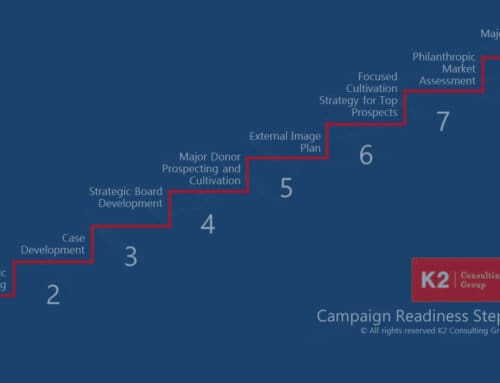I recently went through the “what if” exercise with my estate plan. What if, by the end of my life, I can leave legacy gifts to causes I care a lot about? To what organizations do I give?
My legacy gifts could be game-changing for some. Uneventful and barely noticed by others.
Presumably, the organizations who barely notice midsize gifts are in a better position to manage the money, are almost guaranteed to thrive way beyond the time my gift is made, and can ensure the money goes to the intended purpose. As an example: my alma mater.
From this perspective, I thought about how confident I would be in leaving a gift for the long term to a list of nonprofits.
Think about the questions and considerations donors have when considering estate gifts:
- The sustainability of a nonprofit organization.
- The strength and continuity of the leadership and governing bodies.
- Viability of capital projects, programs, and departments.
- Feeling a gift to your organization outweighs others as important or more so.
- Long-term planning.
- Financial transparency.
- Reputation for high-quality, in-demand programs.
Examples of how nonprofits unwittingly deter major donors:
- Turnover in the Executive Suite. The underlying cause is unaddressed by the board.
- Founder retains tight control over the organization. There’s no succession plan for the Founder or the organization.
- The board’s role is fundraising, but they have no role in employing, reviewing performance, or releasing the CEO.
- Lack of board term limits, especially the Board Chair.
- The board is comprised of the CEO’s friends and business associates.
- Sale(s) of property assets to balance the budget. This is especially tough when a capital project was built a decade prior.
- It is overspending and underperforming in fundraising and program income.
- The organization does not have a current, relevant strategic plan.
- CEO is not 100% dedicated to their role in fundraising.
- The reputation for quality programming is inconsistent.
- Board members have not committed to the organization’s long-term through a legacy commitment.
Attracting legacy gifts is only possible if an organization proves its viability through a well-run organization, results, quality programming, a critical mission, and a solid plan for the future. Building this kind of confidence and trust in donors could take years.
“Legacy” gifts or planned gifts are often the least prized in a busy development effort focused on keeping the operation going and fulfilling its mission.
CEOs are often focused on outcomes and income that occur during their tenure. Yet, imagine the benefits of an endowment fund providing additional dollars every year.
Every nonprofit should promote planned gifts through its website, emails, printed materials, a legacy society, and more.
Don’t assume donors know enough about you as they make critical philanthropic decisions and designations. You can compete with major medical institutions, universities, and other well-known nonprofits.
Start by looking at your organization as a donor and answer the question, “Would I make a legacy gift to my organization?”








Leave A Comment